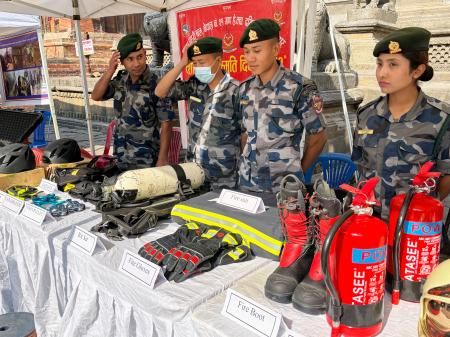Rebuilding Nepal: Ten Years Post-Earthquake – A Decade of Progress and Persistent Challenges
Ten years have passed since the devastating 2015 Gorkha earthquake shook Nepal, leaving a trail of destruction and claiming thousands of lives. While the immediate aftermath saw a global outpouring of support and aid, the journey of rebuilding Nepal has been a complex and protracted one, marked by both significant progress and persistent hurdles. This article explores the decade-long recovery effort, examining the successes, setbacks, and the ongoing challenges that lie ahead.
The Earthquake's Devastating Impact: A Look Back
The 7.8 magnitude earthquake struck on April 25, 2015, triggering widespread devastation across Nepal. The UNESCO World Heritage sites of Kathmandu Valley, including Kathmandu Durbar Square, Bhaktapur Durbar Square, and Patan Durbar Square, suffered irreparable damage. Beyond the historical landmarks, countless homes, schools, and hospitals were reduced to rubble, leaving millions displaced and vulnerable. The death toll exceeded 8,000, with tens of thousands injured. The earthquake's impact extended far beyond the immediate loss of life, severely impacting the country's economy and infrastructure.
Immediate Response and International Aid
The international community responded swiftly, providing crucial emergency relief, including medical aid, food supplies, and temporary shelters. Organizations like the UN, Red Cross, and numerous NGOs played pivotal roles in delivering aid and coordinating relief efforts. However, the logistical challenges of reaching remote and mountainous regions proved significant, hindering the timely delivery of assistance in some areas.
Progress in Rebuilding Nepal: A Decade of Reconstruction
The past ten years have witnessed significant strides in rebuilding Nepal. Much progress has been made in:
- Housing Reconstruction: Millions of homes have been rebuilt or repaired, thanks to government initiatives and international support. The government's housing reconstruction program, while facing challenges, has successfully helped many families regain secure housing.
- Infrastructure Development: Significant efforts have been made to rebuild and upgrade critical infrastructure, including roads, bridges, and schools. This has improved connectivity and access to essential services across the country.
- Cultural Heritage Preservation: The reconstruction of historical monuments and cultural heritage sites has been a slow but steady process. While many sites have been restored, challenges remain in ensuring the preservation of traditional building techniques and materials.
- Disaster Risk Reduction: Nepal has invested in strengthening its disaster preparedness and response mechanisms. This includes developing early warning systems and building codes to mitigate the impact of future earthquakes.
Challenges That Persist: Obstacles to Complete Recovery
Despite the progress, numerous challenges continue to hinder Nepal's complete recovery:
- Bureaucratic Hurdles: Navigating complex bureaucratic processes has been a major obstacle for many affected communities, delaying access to aid and reconstruction funds.
- Corruption: Allegations of corruption in the distribution of aid and reconstruction funds have undermined public trust and hampered progress.
- Funding Gaps: While international support has been substantial, significant funding gaps remain, hindering the completion of many reconstruction projects.
- Economic Impact: The earthquake dealt a severe blow to Nepal's economy, and recovery has been slow, particularly in the tourism sector. Many communities struggle with unemployment and poverty.
- Political Instability: Political instability and changes in government have also impacted the continuity of reconstruction efforts.
Looking Ahead: The Path to Sustainable Resilience
Rebuilding Nepal is not merely about restoring physical infrastructure; it’s about building a more resilient and sustainable future. This requires:
- Strengthening governance and transparency: Addressing corruption and improving bureaucratic efficiency are crucial for ensuring effective resource allocation.
- Investing in sustainable development: Promoting economic growth, creating job opportunities, and reducing poverty are essential for long-term recovery.
- Prioritizing disaster risk reduction: Continued investment in early warning systems, building codes, and community-based disaster preparedness programs is vital.
- Continued international cooperation: Nepal continues to need the support of the international community to complete the rebuilding process and build resilience against future disasters.
Nepal's journey of rebuilding has been a testament to the resilience of its people. While significant progress has been made, the challenges remain substantial. A sustained commitment from the government, international partners, and the Nepali people is crucial to ensure a complete and sustainable recovery, creating a future where the scars of the 2015 earthquake are a reminder of strength and resilience, rather than a symbol of ongoing hardship.
Keywords: Nepal earthquake, Nepal reconstruction, 2015 Nepal earthquake, rebuilding Nepal, Nepal recovery, post-earthquake recovery, disaster relief, international aid, sustainable development, disaster risk reduction, Nepal's resilience.
